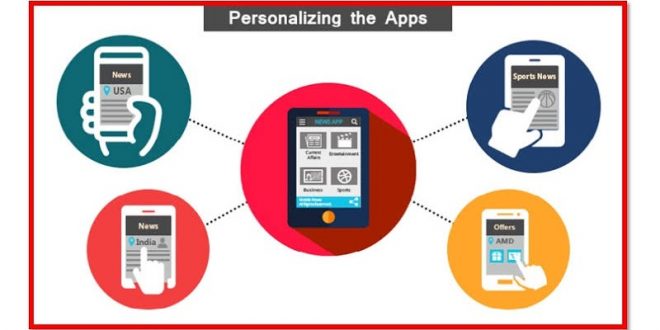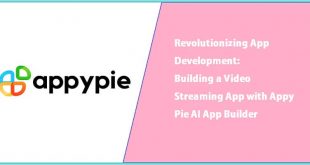If you have ever heard of app personalization, then you know that it is essential for good mobile usability. But how can you implement it in your own creation to provide your customers with the best possible experience? Here’s how app personalization is the key element of mobile usability.
What is app personalization and how is it related to mobile usability?
First of all, to understand what personalization is and why it is so important, we must determine the difference between personalization and customization. Both of these are essential, but they are used in different situations and pursue slightly different aims.
Imagine this: you come to a pizza place. If you need to ask for certain ingredients to be added to your pizza, that will be considered customization. If they already know what you want to order and have such an option in their menu, that will be called personalization.
To put it simply, customization is something done by the user while personalization is done by the system that the user interacts with in some way. Personalization aims to provide users with an experience that matches their needs and interests without the users having to put in much or any effort to get this experience.
While customization has been around for centuries, personalization is relatively new. The last few decades saw an increased interest in personalization both from the side of customers and from the side of sellers and producers. Such a tendency is evident throughout all the industries and it has become a standard by this point.
Nevertheless, many businesses still underestimate or forget about the value of app personalization. They believe it to be insignificant and instead waste their resources on things that aren’t really necessary.
Tips and tricks for mobile app personalization
So, how can you personalize your mobile app to improve its usability? Here are some of the steps you can follow:
- Know Your Audience: Plan your strategy based on who your target audience is and what you are trying to achieve. Determine which elements you want to personalize and how you will be doing that. You have to know what you will be doing at each stage of the process of app personalization.
- Collect Information: Ask people using your app to register and create their profiles. You have to create an environment where completing these actions will be beneficial for them. Ask users to fill out forms with their interests, hobbies, preferences, and so on. This will allow you to collect as much personal data as possible.
- Create Personalized Content: After you collect the data, you will need to process and analyze it. This will allow you to create personalized content that will be relevant to your users and that they will enjoy and want to engage with. “One size fits all,” doesn’t work anymore.
- Translate Various Elements: An integral part of app personalization is translating it in order to make the experience more enjoyable for your users. This can be done with the help of such online translation and localization services like PickWriters. If you know who your audience is, it will be easy to determine which languages they will favor.
- Use Email and Notifications: Publishing your content in your app is only half of the job. You need to get the word out about it and notify your users about the things they may want to check out. Use push notifications and emails to send out information, but remember to ask your users want they would like to receive and what they wouldn’t.
- Find More Opportunities: Never stop looking for more opportunities and the kind of personalized features you can include in your app. Brainstorm ideas and look at other successful apps and what they do.
Examples of great app personalization
Now that you know how to use personalization and implement it in your app in an effective way, it’s a good idea to look at some examples of apps that are personalized well. Here are the top five that you can learn from:
- Amazon: Amazon is notorious for offering one of the best-personalized experiences you will ever encounter. Amazon takes the users’ past searches, purchases, and other preferences and analyzes this data to then offer the most relevant items a particular person would be likely to purchase. Users can also participate: there is a feature that lets you curate lists of things you like. Similarly, Amazon also allows you to save your payment and shipping information for later purchases which are also an example of personalization.
- Spotify: In terms of personalization, Spotify is second only to Amazon. From “Daily Mixes” to “Discover Weekly” playlists, this platform constantly collects user data and uses it to personalize the experience of every Spotify member. The app also sends push notifications and emails to the users when new releases related to what they like to come out. Moreover, there are also the year-end playlists compiled based on user data that contain all the relevant suggestions.
- Netflix: Netflix is notorious for such features as “Watch It Again”, “Because You Watched”, and “Continue Watching” lists that feel like they were compiled just for you. Of course, not everyone is able to build such complex systems that can provide users with virtually handpicked recommendations. Instead, look at where Netflix places these suggestions – at the end of a show and on the home page. Think of where you could place such recommendations in your own app.
- Facebook: Perhaps the biggest social media in the world, Facebook knows how to utilize user connections in a special way. First, look at the newsfeed and you will see just how organized it is with the most relevant posts for you to see at the top. If you spend some time on Facebook, you will start getting notifications for anniversaries such as when you became friends with someone on the platform. These are just some of the examples, but there are many more.
- Instagram: Instagram’s algorithm has long become a joke, but it’s actually still quite beneficial for regular users. Instagram allows users to easily discover fun and engaging content through the “Explore” tab. When you look on the feed, you will notice that the first posts that show up are the ones from the people that you mostly engage with (e.g. visit their profiles, view their stories, like or comment under their posts).
Final Thoughts
All in all, app personalization will definitely help you with improving mobile usability and creating a better experience for your users. Remember to pair it with customization for better results and use the most effective practices outlined in this article.
BIO:
Donald Domby is an impeccable writer with vast experience in writing articles. His articles have been published in many online publications, websites, and blogs. He currently writes for BestWritersOnline, where he shares his excellence in marketing.
 Free Web Resources , psd, mockups, & web templates Best WordPress Themes & Best Html Templates
Free Web Resources , psd, mockups, & web templates Best WordPress Themes & Best Html Templates








